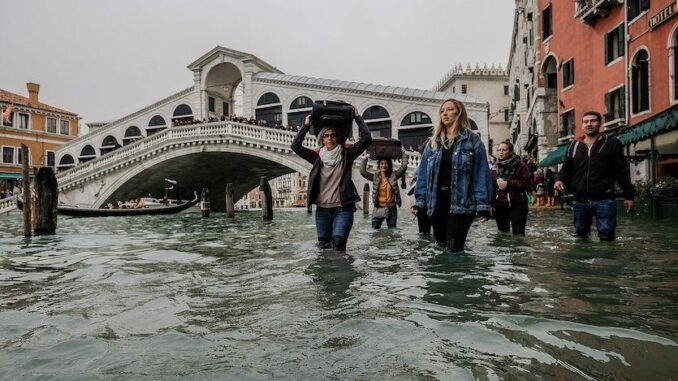
A series of catastrophic floods struck Italy in May 2023, causing damage all over the nation. A catastrophe of epic proportions was caused by a combination of flooding rivers, heavy rains, and poor infrastructure.
An extraordinary period of heavy rainfall was the main factor contributing to the floods in Italy. The earth was saturated by frequent storms and intense rains, overtaxing rivers and drainage systems. Warmer temperatures are linked to higher atmospheric moisture and extreme weather occurrences, which in turn contributes significantly to the severity of the rainfall.
The floods had widespread effects on both urban and rural regions. Streets in metropolitan areas became roaring rivers as overburdened drainage systems failed to handle the amount of water flowing through. Homes and businesses were flooded, and buildings and infrastructure were severely damaged. The floods caused roads and bridges to collapse, isolated many settlements, and interrupted transportation networks. In the more rural areas, agricultural land was flooded damaging livestock and crops. Significant economic losses were experienced by farms and rural communities, which had an effect on many farmers’ livelihoods. Additionally, water supplies were contaminated by the floods, endangering public health and raising the risk of waterborne illnesses.
The Italian government launched recovery initiatives after the floods to lessen the suffering and assist the affected people. They worked with many international assistance organizations. Emergency personnel, including firefighters, police, and volunteers, put in endless hours to rescue trapped people and give aid to those in need. The safety of the locals was ensured by the execution of evacuation measures in the most susceptible locations.
To aid with their recovery, the government gave financial aid to the impacted people and companies. Beginning with repairing homes and damaged infrastructure, reconstruction activities were launched. It was a difficult task that called for cooperation and coordination across various governmental levels as well as backing from the international community.
The May 2023 floods in Italy provided a sobering reminder of the frequency and intensity of extreme weather occurrences brought on by climate change. To lessen the effects of upcoming floods, Italy emphasizes the need for upgraded infrastructure, such as stronger drainage systems and flood prevention measures. To reduce the loss of life and property during such disasters, investments in early warning systems, public awareness campaigns, and community preparedness are essential.The floods also highlighted the significance of combating climate change and putting sustainable practices in place to cut greenhouse gas emissions. To lessen the consequences of climate change and increase resilience in vulnerable places, international cooperation and teamwork are essential. It is crucial that the lessons learned from this catastrophe be applied, with a renewed focus on climate change and disaster preparedness so Italy does not have to suffer the same fate once again.